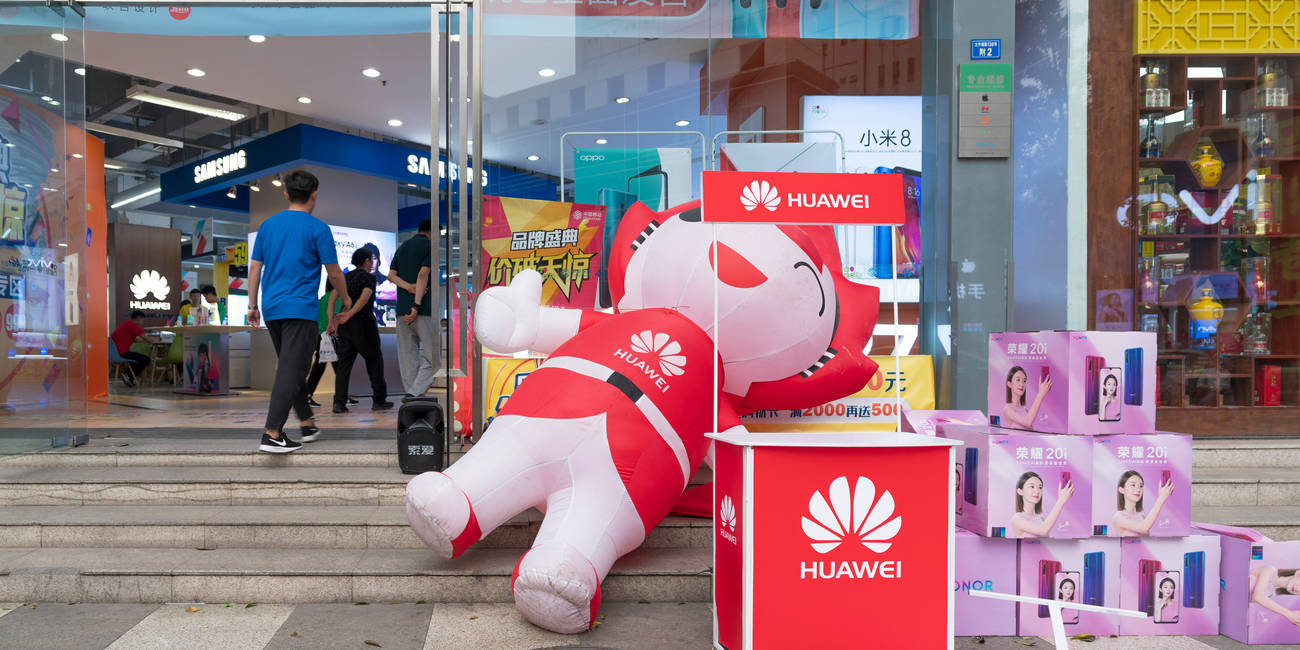Rip-and-replace Mandates, Sanctions.... All That And Huawei's Share Of Telecoms Market Actually Grew Last Year

The global market for telecoms equipment grew 7 per cent during 2020, according to an analyst report, in a year marked by an increased dependence on Internet connectivity and widespread 5G deployments.
US network and telco kit-watcher Dell Oro estimated the combined market for telecoms equipment to be in the region of $90bn and $95bn, split almost evenly between carrier equipment (RAN and Core) and fixed-line and microwave gear.
The biggest winner – surprisingly – was Huawei. Despite US trade sanctions impacting global supply chains, a rip-and-replace mandate in the UK, and partial network exclusions and warnings against its usage in multiple other nations, the troubled Chinese teleco kit maker saw its share of the revenue pie expand from 28 per cent in 2019, to 31 per cent last year.
Fellow Middle Kingdom bogeyman ZTE also saw its slice of telecoms sales grow, albeit more modestly, nudging from 9 per cent of revenues to 10 per cent.
Over the past few years, ZTE and Huawei have both seen their international carrier businesses under sustained attack in the West, over allegations they present an unacceptable national security risk. In the US, both parties have been cut out from rural networks, with the FCC banning rural carriers from using federal subsidies to acquire new kit. Congress has also earmarked funds to remove and replace existing equipment.
It’s not much better in Europe. Last year, an NCSC report designated Huawei as a high-risk vendor due to its Chinese origins and supply chain woes, prompting the UK's Department for Culture, Media and Sport (DCMS) to order carriers to rip-and-replace existing Huawei-made networks. The company faces similar bans in Sweden, Italy, Bulgaria and Poland, with other nations weighing up imposing restrictions or wholesale exclusions.
Huawei’s gravity-defying revenue figures are likely indicative of the firm’s strength in its domestic market, as well as in developing nations, with deals inked to carriers in Kenya, Zimbabwe, South Africa, and others. ZTE, meanwhile, won major contracts in Uganda and Mauritania during 2020. ZTE is also a big player in China, supplying 5G kit to the nation’s biggest carriers: China Mobile, China Unicom, and China Telecom.
China’s telecoms “whales” undoubtedly are a factor behind the ongoing success of Huawei and ZTE. China Telecom – just one of the three large state-owned carriers – has said it plans to spend CNY39.7 billion (around £4.38bn) on 5G kit this year, with the bulk - based on previous trends - likely going towards domestic suppliers.
In second and third place respectively were Nokia and Ericsson, which each took 15 per cent of the global telecoms revenue. Nokia dipped slightly from its previous standing of 16 per cent, while Ericsson grew modestly from 14 per cent.
Both companies are benefactors of Huawei’s woes in Europe and North America. Ericsson, for example, has won contracts to provide core services for Dutch carrier KPN, and the German branch of Telefonica. On the RAN front, Ericsson has been selected to provide gear for O2 in the UK as well as BT's EE. While O2 is the sole UK network to have eschewed Huawei entirely, EE had previously bet big on the company, with Huawei providing “more than 35 per cent” of RAN kit at this point last year.
Nokia and Ericsson haven't had it all their own way: In April, Nokia withdrew from China’s 5G RAN market, after failing to win any contracts with the three main carriers. ZTE and Huawei captured around 90 per cent of the market, with Ericsson sweeping up the crumbs. Ericsson, meanwhile, has said it fears potential retaliation from Beijing, following Sweden’s decision to ban Huawei from its domestic networks. ®
From Chip War To Cloud War: The Next Frontier In Global Tech Competition
The global chip war, characterized by intense competition among nations and corporations for supremacy in semiconductor ... Read more
The High Stakes Of Tech Regulation: Security Risks And Market Dynamics
The influence of tech giants in the global economy continues to grow, raising crucial questions about how to balance sec... Read more
The Tyranny Of Instagram Interiors: Why It's Time To Break Free From Algorithm-Driven Aesthetics
Instagram has become a dominant force in shaping interior design trends, offering a seemingly endless stream of inspirat... Read more
The Data Crunch In AI: Strategies For Sustainability
Exploring solutions to the imminent exhaustion of internet data for AI training.As the artificial intelligence (AI) indu... Read more
Google Abandons Four-Year Effort To Remove Cookies From Chrome Browser
After four years of dedicated effort, Google has decided to abandon its plan to remove third-party cookies from its Chro... Read more
LinkedIn Embraces AI And Gamification To Drive User Engagement And Revenue
In an effort to tackle slowing revenue growth and enhance user engagement, LinkedIn is turning to artificial intelligenc... Read more

